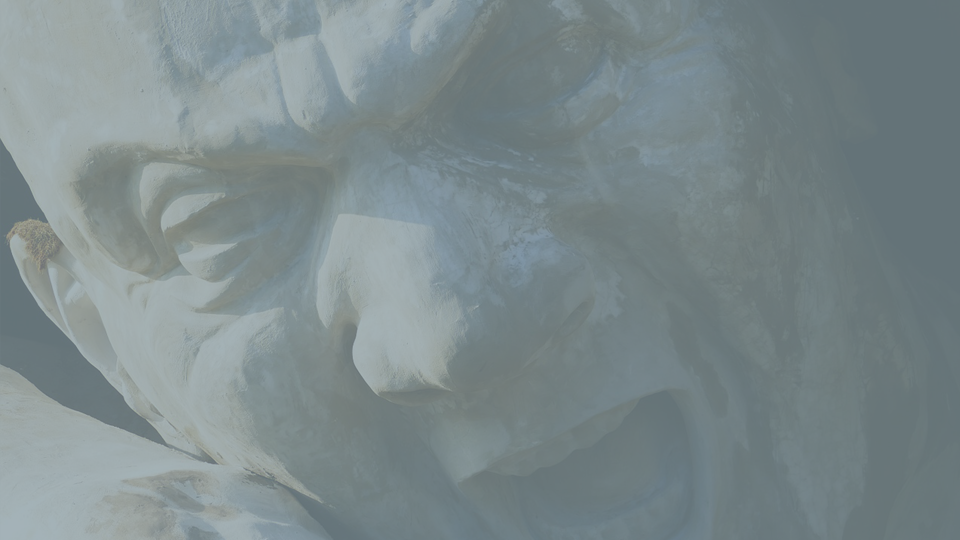How Can All These Babies Being Slaughtered Mean the Messiah is Here?
Matthew 2:16-18 says: Then Herod, when he saw that he had been tricked by the wise men, became furious, and he sent and killed all the male children in Bethlehem and in all that region who were two years old or under, according to the time that he had ascertained from the wise men. Then was fulfilled what was spoken by the prophet Jeremiah: “A voice was heard in Ramah, weeping and loud lamentation, Rachel weeping for her children; she refused to be comforted, because they are no more.”
Restoration is a common theme in the Old Testament, especially in the writings of the major prophets Isaiah, Jeremiah, Ezekiel, and Daniel. They all wrote at different points of great suffering in the life of God’s people. When there was the threat of conquest, deportation, or living in bondage and captivity, God raised up a prophetic voice to remind His people that a future of great blessing was being prepared for them.
Communicating that future blessing fulfilled in the coming Messiah was one of St. Matthew’s chief goals as he wrote of the life and ministry of Jesus. Much of his Gospel is intended to be connected with the Old Testament, and when those connections are not made, Matthew’s words can be confusing.
Matthew quotes Jeremiah 31:15 in Matthew 2:18 as part of his understanding of how the events of Jesus’ life continue to fulfill Old Testament prophecy. At the outset, just reading this prophecy as part of the birth narrative of Jesus, the question arises as to how a random passage such as this fulfills anything that has to do with the Messiah and the salvation of the world. It seems to be a statement of fact or a record of some distant event that happens to coincide with what Herod did as a result of his anger and insecurity. And even if you open up to Jeremiah 31:15 and read it in isolation or in conjunction with the verses that follow, it still is difficult to make the connection to messianic fulfillment.
The clearer picture results if we go all the way back to the beginning of Jeremiah chapter 30 and read from there. Jeremiah 30-31 are words of hope that God gave Jeremiah to say in regards to the Babylonian conquest of God’s people and their deportation to a distant land. There will be future restoration. There will be deliverance. There will be singing and dancing once again. There will be joy. And Matthew connects all of these future promises with the birth of Jesus.
Ramah was about 7-8 miles north of Bethlehem. It was the way-station that the Babylonians had people stop in before marching them across the desert to their captivity in their faraway country. Ramah acted as a holding cell for the prisoners about to go into exile. People knew that when they arrived here, this would be the last time they would probably see their beloved homeland. And so there was loud crying that could always be heard coming out of that place.
Rachel was the wife of Jacob and mother of Joseph all the way back in Genesis. She was buried at Bethlehem and was regarded as the mother/representative of Bethlehem. Everyone knew where her tomb was just outside the city. It was as familiar to them at the time of Jesus as it was at the time of Jeremiah. The imagery for the people at the time of Jeremiah was that even miles away from Ramah, Rachel was mourning and crying out for her people because she could “hear” their screams rise from that place. Alternatively, the imagery for Matthew of the slaughter that happened in and around Bethlehem at the hand of Herod is seen as making a cry loud enough to be “heard” at Ramah. Of all of the passages that Matthew could have correlated with messianic fulfillment, this passage bridges a significant event in the lament life of Old Testament Israel, where the imprint of lingering national pain because of the Babylonian Captivity would emotionally solidify that these current sufferings could only be leading to the coming of the Messiah.
Real suffering was going to precede the coming of restoration at the hand of God’s Anointed One. Jeremiah 30-31 give a divine picture of what the promised future would look like when the current pain and suffering were destroyed. The enemy is real and the hurt that he will cause is real. But this suffering will one day be relieved, and what you have been praying for, what you have been hoping for, what God has promised, is now at hand in this baby. God has made a way for a resilient future grace.
It’s only through all of these pieces being put together that we get the clarity on how this seemingly random passage is a part of the grand dynamic of Messianic hope. God’s people will be oppressed at the hand of the enemy, but God will bring triumph to His people. And it is this message that transcends time and peoples. The enemy will wreak havoc in our lives, but because of the greatest message of hope ever known, we will one day find rest from our troubles. Those troubles overwhelm now, but release will happen.
Cry out because you see and know suffering; but know that God has come to make that message temporary.
Amen




Recent Comments